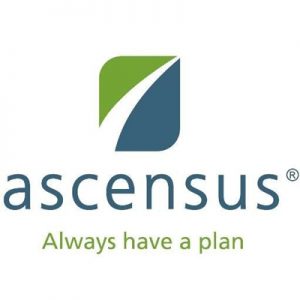When your organization first began offering IRAs, you decided to use either the IRS model document or a prototype document as your required IRA plan agreement. Now – with the IRS expected to release new IRA model documents soon – you may want to revisit that decision to make sure it is still the best one for your organization. Knowing the difference between the model and prototype, and the pros and cons of both, may help.
A Plan Agreement Is Required
Why must an IRA have a plan agreement in the first place? The “A” in “IRA” stands for “arrangement.” An IRA is a legal arrangement that allows individuals to take advantage of certain tax benefits while saving for retirement. The Internal Revenue Code requires a written agreement – the IRA plan agreement – between the IRA owner and the IRA trustee, custodian or issuer (the financial organization) holding the assets. Once both parties sign the plan agreement, the IRA is created. An IRA does not exist without a signed agreement.
The IRA plan agreement also sets forth the terms and conditions specific to the type of IRA (i.e., Traditional, Roth or SIMPLE). It contains the responsibilities of both the IRA owner and the financial organization. Although IRA plan agreements may differ based on whether the financial organization acts as a trustee, custodian or issuer, they are quite similar because the IRS requires specific language in the documents.
IRS Model Document
The IRS provides IRA model forms that satisfy the basic statutory requirements for IRAs. Each IRS model form contains specific language based on the requirements for that type of IRA. The IRS currently offers the following model forms:
- Form 5305, Traditional Individual Retirement Trust Account
- Form 5305-A, Traditional Individual Retirement Custodial Account
- Form 5305-R, Roth Individual Retirement Trust Account
- Form 5305-RA, Roth Individual Retirement Custodial Account
- Form 5305-RB, Roth Individual Retirement Annuity Endorsement
- Form 5305-S, SIMPLE Individual Retirement Trust Account
- Form 5305-SA, SIMPLE Individual Retirement Custodial Account
(Note that there is both a trust and custodial account-model document for each type of IRA – and that an annuity version is available only for the Roth IRA.)
The language in the IRS model documents generally cannot be altered: the text in Articles I–VII for a Traditional IRA and I–VIII for a Roth IRA must stay the same. Only the last article – where the IRS allows for unlimited additional language – can be customized. Your financial organization or document provider can address items not covered in the previous articles, such as definitions, responsibilities, distributions, beneficiary options, excess contributions, and IRA termination procedures. However, the customized language cannot conflict with Internal Revenue Code requirements.
Because of its preapproved content and flexibility, the IRS model form is an inexpensive plan agreement option, which is a primary reason many financial organizations choose to use the model form – or a document based on the model form.
The IRA plan agreement also sets forth the terms and conditions specific to the type of IRA (i.e., Traditional, Roth or SIMPLE). It contains the responsibilities of both the IRA owner and the financial organization. Although IRA plan agreements may differ based on whether the financial organization acts as a trustee, custodian or issuer, they are quite similar because the IRS requires specific language in the documents.
Prototype Document
Some trustees and custodians may find that the IRS model form is too restrictive and may decide to use a prototype IRA document – a specially drafted IRA plan agreement. (Or if your organization issues Traditional or SIMPLE IR annuities, it must use a prototype.)
Using a prototype document allows your financial organization to do something not possible with an IRS model form: use one document to establish either a Roth or Traditional IRA. The IRS does not offer such a combined model document. But just as there are benefits to using a prototype for an all-inclusive IRA document, there may be some drawbacks. These days, more documents are generated and delivered electronically, reducing the potential of human error (e.g., providing clients with the wrong type of IRA plan agreement). Therefore, your organization may find less need for a combined document. Receiving a plan agreement that covers the rules for both Traditional and Roth IRAs may confuse clients.
Regardless of the reason, choosing a prototype document does allow your organization to customize its general plan agreement. It can be outlined differently from the model document – there are no set articles – as long as the language in the prototype is consistent with federal laws. The IRS provides a listing of required modifications, or LRMs, containing all topics covered in the prototype document.
It is recommended that a prototype document be submitted to the IRS for approval after it is drafted; this requires paying an IRS submission fee. If the IRS approves, it will be in the form of an opinion letter, which allows your financial organization and its clients to rely on the document’s contents. IRS approval means that the language of the prototype document conforms with the tax laws and qualifies as an IRA plan agreement.
The IRS approval process typically takes three to six months, with longer wait times becoming common. Each time IRA laws change or any of the information contained in the prototype document needs to change, the document may need to be amended and, thus, a new opinion letter may be necessary. Keep in mind the IRS only identifies when its LRM language updates. If the language in a prototype document is highly customized, your financial organization should monitor for law changes and determine when a document needs amending.
Trust the Experts
Your organization should carefully consider which type of IRA document is best for your business. Some forms providers or document experts, such as Ascensus, offer model and prototype document versions of IRA plan agreements.
Expert, in-house ERISA staff – with decades of combined experience specializing in IRA forms – draft Ascensus’ documents. These experts continually monitor federal government requirements and carefully design and revise paperwork as needed to meet these requirements. Whichever type of document you choose, all the work is done for you, saving your organization time and expense.
Trust the experts. Schedule a call with your Ascensus sales representative or contact Ascensus at 800-346-3860 to learn more or to discuss which option will be best for your organization.










